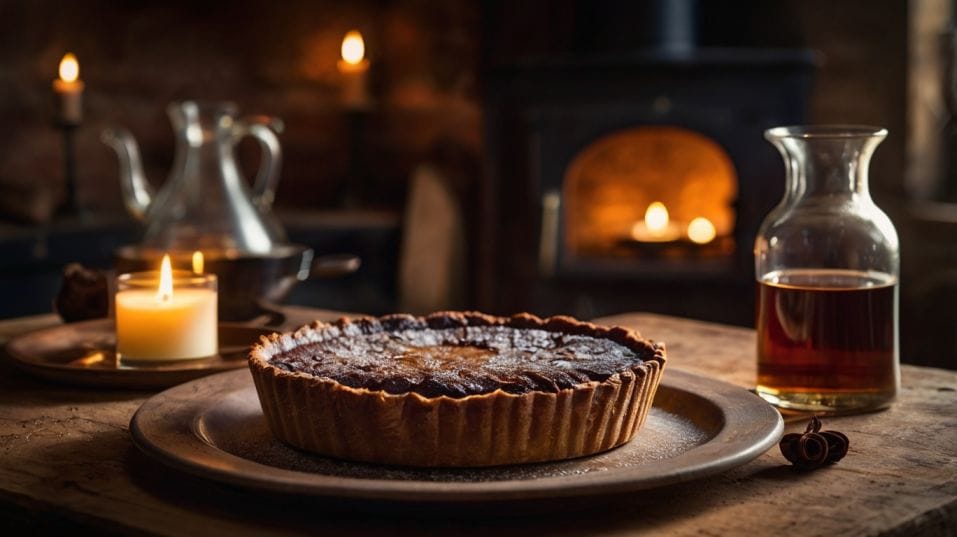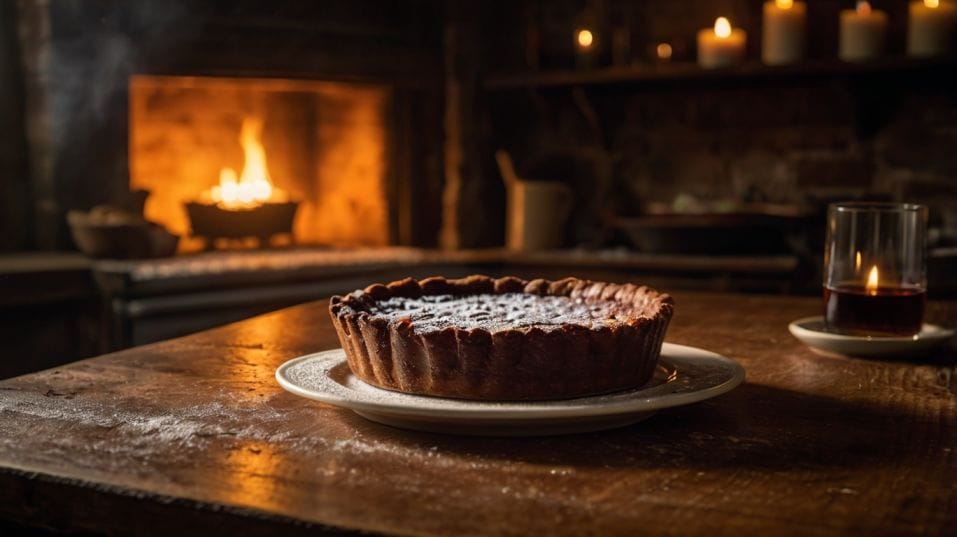5 Holiday Desserts That Shine with Whiskey
Learn how to use whiskey in five bold holiday desserts that sharpen your palate and deepen your appreciation—beyond just sipping.

Ever wondered how whiskey really works in food—not just as a splash for flair, but as a full flavor force? The holidays are your perfect test kitchen.
These five desserts aren’t gimmicks. They’re palate-builders. They show how whiskey transforms when baked, whipped, and reduced, revealing subtleties you’d miss in a glass alone.
Whether you're new to whiskey or just starting to take it seriously, this is how you learn by tasting, not just sipping.
Bread Pudding with a High-Proof Bourbon Reduction
Bread pudding is comfort food, sure—but it’s also one of the most versatile desserts for showcasing a full-bodied whiskey. The richness of the custard needs contrast, and a high-proof bourbon does exactly that.
Not just alcohol for impact, but structure and heat that cuts through fat and sugar. Think 110+ proof. Not shy. Not muted.
Reduce it with dark brown sugar, a touch of real maple, and unsalted butter. The trick is in the timing—don’t over-reduce.
You’re not making syrup, you’re layering aromatics. Let it simmer until it’s just thick enough to cling to the spoon. The flavor shift is immediate. The vanilla and oak in the bourbon come alive under heat, caramelizing and intensifying.
Use a rustic bread with body—day-old challah or brioche—and bake low and slow. Drizzle the reduction while warm, let it soak slightly, and taste it hot.
The contrast between soft pudding and sharp bourbon sauce wakes up your palate. You’ll start to notice grain flavors. Corn sweetness, toasted wood, even nutmeg from the barrel. That’s not coincidence. That’s chemistry.

Dark Chocolate Tart with Islay Single Malt Cream
Smoke and chocolate? Not a gimmick. When you understand why they work together, it becomes a tool.
Peated Islay whiskies have a briny, phenolic edge—yes—but when folded into cream and paired with high-cocoa dark chocolate, something wild happens. The peat doesn’t dominate. It hovers. It adds tension.
Build for Bitterness
Start with 70% or higher dark chocolate for the filling—bitterness matters. The cream should be softly whipped, not stiff, and lightly infused with a smoky single malt. Don't overdo it.
You’re not making whiskey cream; you're adding a volatile layer that flashes on the tongue. The fat from the cream carries the whiskey’s aroma right into your nose—where flavor perception really happens.
Now taste it together. The tart is dense, glossy, and rich. The cream is soft, airy, and spiked with just enough smoke to keep things from getting flat.
You’ll notice how the malt’s salt and char push against the bitterness of the chocolate, revealing sweetness you wouldn’t catch otherwise. That’s what happens when whiskey stops being a side note and becomes part of the architecture.
Sticky Toffee Cake with American Single Malt Glaze
American single malts are still defining themselves—but most lean into roasted grain, dried fruit, and spice.
That makes them a perfect match for date-heavy desserts. Sticky toffee cake, with its deep molasses tone and soft texture, acts like a blank slate.
But instead of topping it with generic caramel, use a reduction of American single malt, brown sugar, and cream.
Don’t Just Glaze—Train
Here’s the method: reduce the whiskey first, low and slow, then add sugar and a splash of cream. Let it thicken just enough to coat a spoon.
Taste it before adding to the cake—this is where you train your palate. Identify the spice notes. Nutmeg, cinnamon, maybe even leather. You’re building a glaze, but also building awareness.
When poured warm over the cake, it seeps in. The whiskey doesn’t sit on top—it integrates. Suddenly, the cake reveals more than dates and sugar.
You’ll catch roasted barley, maybe a bit of citrus peel, even subtle oak if the malt spent real time in wood. It’s dessert as flavor map. A tasting note in three dimensions.
Apple Galette with Rye Crust
You want to understand rye? Bake with it. Rye whiskey’s lean, spicy edge makes it harder to pair with dessert—unless you work with texture and temperature.
Here’s how: add a splash of rye to your pastry dough. Not much—just enough to replace a portion of the cold water. It makes the crust slightly more brittle, more fragrant, and introduces that unmistakable peppery spark.
Build with the Grain
Next, prep your apples with another small pour of rye, a squeeze of lemon, and a pinch of salt. Let them sit while you roll the dough.
What happens in that time is subtle but important—the rye pulls out some of the fruit’s acidity, balances sweetness, and infuses the mix with baking spice notes without dumping in cinnamon.
Once baked, the rye doesn’t scream—it lingers. In the crust’s aftertaste. In the way the fruit finish shifts. It’s a controlled use of spirit that teaches you how rye behaves under heat and fat.
Better than any tasting flight. And yes, a small glass of the same rye on the side completes the study. You’ll notice alignment. You’ll catch subtleties. You’ll taste sharper.
Eggnog Ice Cream with Whiskey Ribbon
Eggnog gets a bad rap. Store-bought stuff is cloying and flat.
But make it from scratch—egg yolks, heavy cream, nutmeg, real vanilla—and you’ve got the base for a frozen dessert that does more than nod to the holidays. It teaches you about cream-friendly whiskey.
Cold Slows, Flavor Builds
Freeze the base into a custard-style ice cream, then swirl in a whiskey caramel ribbon made from a soft, low-proof bourbon or a blended whiskey with mellow spice. The heat will be muted by the cold, but the flavor? That lingers.
Cold changes everything. Your tongue slows down. Alcohol doesn’t spike. You start picking up the delicate stuff: cereal grain, toasted wood, soft baking spice. The kind of notes you miss when sipping fast.
Ice cream is slow tasting, by design. It forces you to pause. And the better your whiskey caramel, the more you’ll start to notice how certain grain blends hold their own against cream. Sweetness isn’t the point. Balance is. Depth is.
Final Thoughts
When you cook with whiskey, you stop drinking it on autopilot. You start tasting deliberately.
Baking forces you to think about temperature, time, fat, acidity—every variable that shapes how whiskey performs. It’s the lab. And dessert? That’s your test kitchen.
Forget gimmicks. No "boozy" shortcuts. Use whiskey where it matters: in structure, in balance, in flavor tension. You’ll develop a sharper palate, a clearer sense of what you like, and a deeper understanding of what’s in your glass.
So pick a dessert. Choose a whiskey with purpose. Reduce it, blend it, build with it. Today. The sooner you start, the faster you learn.




